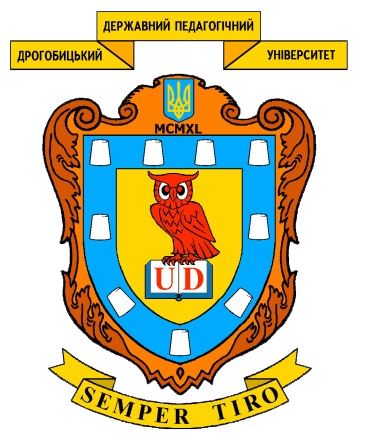ЧУДОТВОРНІ ІКОНИ БОГОРОДИЦІ У ВЕНЕЦІЇ
DOI:
https://doi.org/10.24919/2312-2595.8/50.246522Ключові слова:
ікони Богородиці; Венеція; храм; іконопис; візантійське та поствізантійське мистецтво; музейАнотація
Анотація. Метою статті є аналіз на основі італо- й англомовної літератури історичних, мистецьких, стилістичних особливостей чудотворних ікон Пречистої Діви Марії у храмах м. Венеція, а також місцевих традицій почитання Богородиці та їхнього впливу на формування ідентичності венеційців в історичній ретроспективі. Основу методології роботи формують загальнонаукові методи аналізу та синтезу, спеціальні історичні методи дослідження (хронологічний, історико-системний, історико-порівняльний, ретроспективний), а також міждисциплінарна методика case study. Наукова новизна полягає у тому, що в українській історіографії ця тематика є маловивченою, а також, на базі аналізу сучасної іншомовної наукової літератури, відкриває перспективні ділянки подальших студій малодосліджених ікон Богородиці у Венеції та регіоні Венето.
Висновки. Старовинні італійські книги XVII–XIX ст. надають великий перелік чудотворних ікон Богородиці у Венеції. Кожна з них має оригінальну історію походження, іконографічні особливості та традиції пошанування у венеційському просторі. Деякі ікони дотепер зберігаються у храмах Венеції і є дуже відомими («Нікопея» у базиліці Сан Марко; «Месопандітісса» або ж «Богородиця уздоровлення» («Madonna della Salute»); «Богородиця Миру»; «Богородиця з Лепанто»; «Богородиця чудес» («Santa Maria dei Miracoli» тощо). Найбільша кількість досліджень присвячена іконам «Нікопеї», «Богородиці уздоровлення» та «Богородиці миру». Натомість відомості про інші ікони зі старовинного переліку часто є доволі фрагментарними. Крім того, деякі з них вже не зберігаються у храмах, де були колись, оскільки деякі з венеційських церков були ліквідовані або зачинені у час Наполеонівського правління. Важливі аспекти для дослідження відкривають також візантійські та грецькі ікони з венеційських музеїв. Особливе місце в іконописній спадщині Венеції належить іконам італо-критської школи, яка в унікальний спосіб поєднала у собі риси італійського мистецтва та візантійського стилю. Таким чином, історія та іконографічні й стилістичні особливості Богородичних ікон Венеції репрезентують цінний вимір для сучасних досліджень. Крім того, на основі детального вивчення ікон зі згаданих старовинних списків можна розробити цікаві туристичні та паломницькі екскурсійні маршрути Венецією.
Посилання
Nikitenko, N. (2016). Ikona Bohorodytsia Nikopeia na Zolotykh vorotakh yak zakhysnyi symvol Kyieva [Icon of the Mother of God Nikopeiа at the Zoloti Vorota as a protective symbol of Kyiv]. Slavistychna zbirka ‒ Slavic Collection, 2, 282‒292 [in Ukrainian].
Bacci, M. (2009). Venezia e l’icona [Venice is the icon]. Torcello. Alle origini di Venezia tra Occidente e Oriente: exhibition catalogue (Venice, Museodiocesano, 29 August 2009 ‒ 10 January 2010) ‒ Torcello. At the origins of Venice between West and East: exhibition catalog (Venice, Museodiocesano, 29 August 2009 ‒ 10 January 2010) (pp. 96‒115). Venice: Marsilio [in Italian].
Bacci, M. (2020). Greek Madonnas and Venetian Fashion. Convivium, 7 (1), 152‒177.
Boni, G. (1887). Santa Maria dei Miracoli in Venezia [Santa Maria dei Miracoli in Venice]. Venezia: Stabilimento tipografico dei fratelli Vicentini [in Italian].
Chiese scomparse e soppresse a Venezia nell’ epoca Napoleonica [Churches that disappeared and were suppressed in Venice in the Napoleonic era]. (2017/18). Retrieved from https://www.pellizzarimichele.it/files/downloads/Chiese-Venezia-Napoleone.pdf [in Italian].
Church Santi Rocco e Margarita 1488 [Church Santi Rocco e Margarita 1488]. (n.d.). Retrieved from http://www.veniceoperaworld.com/011%20the%20history%20of%20the%20location.pdf [in Italian].
Cornaro, F. (1758). Venezia favorita da Maria [Venice favored by Maria]. Giov. Manfre [in Italian].
Corner, F. (1761). Notizie storiche delle apparizioni, e delle immagini piu celebri di Maria Vergine santissima nella citta, e dominio di Venezia. Tratte da documenti, tradizioni, ed antichi libri delle Chiese nelle quali esse immagini son venerate [Historical information of the apparitions, and of the most famous images of the Most Holy Virgin Mary in the city, and dominion of Venice. Taken from documents, traditions, and ancient books of the Churches in which these images are venerated]. Presso Antonio Zatta [in Italian].
Da Mosto, A. (1940). L’Archivio di Stato di Venezia. Indice generale, storico, descrittivo ed analitico [The State Archives of Venice. General, historical, descriptive and analytical index]. Roma [in Italian].
Deluga, W. (2014). Between Candia and Venice. The role of European engravings in the iconographic transformations of post-Byzantine painting in Greece. Series Byzantina, 12, 75‒109.
Gumppenberg, G. (1839–1847). Atlante mariano, ossia origine delle immagini miracolose della B. V. Maria, venerate in tutte le parti del mondo, recato in italiano ed aggiuntevi le ultime immagini prodigiose fino al secolo XIX da Agostino Zanella sacerdote veronese [Marian Atlas, i.e. origin of the miraculous images of the B. V. Mary, venerated in all parts of the world, brought in Italian and added the latest prodigious images up to the 19th century by Agostino Zanella, a Veronese priest]. Verona: Sanvido [in Italian].
Gumppenberg, G. (1840). Italia: 1‒8: Europa [Italy: 1‒8: Europe]. (Vol. 1). Verona: Tipografia Sanvido [in Italian].
Icona Madonna delle Grazie detta "Della Salute" [Icon of Our Lady of Grace known as "Della Salute"]. (n.d.). Retrieved from http://www.iconedelveneto.it/basilica-santa-maria-della-salute/ [in Italian].
Il Pellegrinaggio Annuale [The Annual Pilgrimage]. (n.d.). Retrieved from https://basilicasalutevenezia.it/pellegrinaggio-annuale/ [in Italian].
Ircani Menichini, P. (2018). Unde Origo Inde Salus. Dove è l’origine qui è la salute. Madonna Di Salvezza [Unde Origo Inde Salus. Where the origin is, here is health. Madonna Of Salvation]. Retrieved from https://annunziata.xoom.it/madonna%20salute%20venezia%20volterra.pdf [in Italian].
Martinelli, D. (1705). Il ritratto overo Le cose piu notabili di Venezia diviso in due parti. Nella prima si descrivono brevemente tutte le chiese della citta ... Nella seconda, si fa breve relazione del governo della Repubblica, delli magistrati, delle fabriche publiche e piu riguardeueli etc. Ampliato con la relazione delle fabriche publiche e private, & altre cose piu notabili successe dall’anno 1682 fino al presente 1704, da D.L.G.S.V. [The portrait is the most notable things in Venice divided into two parts. In the first, all the churches of the city are briefly described ... In the second, a brief report is made of the government of the Republic, the magistrates, the public buildings and more concerning etc. Expanded with the report of public and private buildings, & other more notable things happened from the year 1682 to the present 1704, by D.L.G.S.V.]. Venezia: Presso Lorenzo Baseggio [in Italian].
Molin, A.M. (1821). Dell’antica immagine di Maria santissima che si conserva nella basilica di S. Marco in Venezia [Of the ancient image of the Blessed Virgin Mary which is preserved in the Basilica of San Marco in Venice]. Venezia: Tipografia Zerletti [in Italian].
Moresini, A. (1692). Origine delle chiese dedicate a Maria Vergine Gran Madre di Dio, e riverite dalle quattro parti del mondo… [Origin of the churches dedicated to the Virgin Mary Great Mother of God, and revered by the four parts of the world...] [in Italian].
Muir, E. (1989). The virgin on the street corner: the place of the sacred in Italian cities. In S. Ozment (Ed.), Religion and Culture in the Renaissance and Reformation (pp. 25‒40).
Museo delle icone [Icon Museum]. (n.d.). Retrieved from http://www.istitutoellenico.org/museo/index.html [in Italian].
Museum of icons. (n.d.). Retrieved from https://www.venezia-tourism.com/en/venice-attractions/museums/museum-of-icons.html.
Passarelli, G. (2007). Creta: tra Bisanzio e Venezia [Crete: between Byzantium and Venice]. Milano: Jaca Book [in Italian].
Pavičić, I.P. (2008). Le idee cristologiche nel contesto della commemorazione della battaglia di Lepanto: contributo allo studio dell’altare di Giovanni Vrananell a chiesa di San Giuseppe a Venezia [Christological ideas in the context of the commemoration of the battle of Lepanto: contribution to the study of the altar by Giovanni Vrananell in the church of San Giuseppe in Venice]. IKON, 1, 215‒226 [in Italian].
Pizzolato, L. (2015). La Madonna Nicopeia, portatrice di vittoria [The Madonna Nicopeia, bringer of victory]. Retrieved from https://www.venetostoria.com/?p=3155 [in Italian].
Rizzi, A. (1972). Le icone bizantine e postbizantine delle chiese veneziane [Byzantine and post-Byzantine icons of Venetian churches]. Thesaurismata, 9, 250‒291 [in Italian].
Rizzi, A. (1980). Un’icona constantinopolitana del XII secolo a Venezia: La Madonna Nicopeia [A 12th century Constantinopolitan icon in Venice: The Nicopeia Madonna]. Thesaurismata, 17, 290‒306 [in Italian].
Thomaidis, D. (2017). Greek icons in Venice and their impact on Venetian identity. Diogenes, 6, 1‒12.
Tiepolo, G. (1618). Trattato dell’imagine della gloriosa Vergine dipinta da San Luca. Conservata già molti secoli nella ducal Chiesa di San Marco della città di Venetia [Treatise on the image of the glorious Virgin painted by Saint Luke. Preserved for many centuries in the ducal Church of San Marco in the city of Venetia]. Venice: Alessandro Polo [in Italian].
Tre Icone del Museo Diocesano – Padova [Three Icons from the Diocesan Museum ‒ Padua]. (n.d.). Retrieved from http://www.iconedelveneto.it/museo-diocesano-di-padova/ [in Italian].
Voulgaropoulou, M. (2019). From Domestic Devotion to the Church Altar: Venerating Icons in the Late Medieval and Early Modern Adriatic. Religions, 10 (6), 390. doi: 10.3390/rel10060390.
Walberg, D. (2016). Tradition and Propaganda in the Venetian Madonna della Pace. IKON, 9, 269‒282.
Walberg, H.D. (2004). "Una compiuta galleria di pitture veneziane": The Church of S. Maria Maggiore in Venice. Studi Veneziani, XLVIII, 1000‒1045.
Walberg, H.D. (2013). The Cult of the Nicopeiain Seventeenth-Century Venice. Reflections on Reniassance Venice: A Celebration of Patricia Fortini Brown (pp. 201‒207).
Zangirolami, C. (1962). Storia delle chiese: dei monasteri, delle scuole di Venezia rapinate e distrutte da Napoleone Bonaparte [History of the churches: of the monasteries, of the schools of Venice robbed and destroyed by Napoleon Bonaparte]. Venezia: G. Zanetti [in Italian].
Zorzi, A. (1972). Venezia scomparsa [Venice disappeared]. [in Italian].
##submission.downloads##
Опубліковано
Номер
Розділ
Ліцензія

Ця робота ліцензується відповідно до Creative Commons Attribution-NonCommercial-ShareAlike 4.0 International License.








